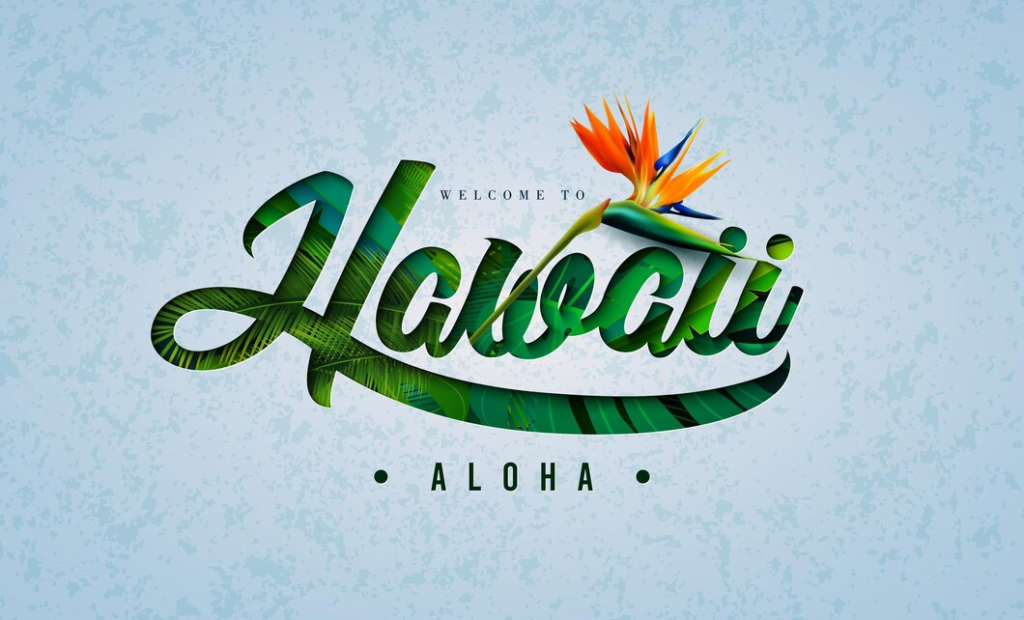Introduction
Nestled in the heart of the Pacific, Hawaii, with its breathtaking landscapes and rich cultural tapestry, has become synonymous with paradise. The story of tourism in Hawaii is as fascinating as the islands themselves. In this article, we embark on a journey through time to uncover the origins and evolution of tourism in this tropical haven.

The Ancient Aloha Spirit: Early Encounters and Exploration
The Polynesians’ Arrival
Long before the concept of modern tourism took shape, the islands of Hawaii were discovered and settled by Polynesian voyagers. This ancient seafaring culture, guided by celestial navigation, reached the Hawaiian archipelago around 1,500 years ago. The Polynesians, with their deep connection to nature and the land, laid the foundation for the unique cultural identity that defines Hawaii today.
The Arrival of Western Explorers
As the world entered the age of exploration, Western navigators stumbled upon the Hawaiian Islands. Captain James Cook, a British explorer, made his first landfall in Hawaii in 1778. Cook’s encounters with the Hawaiians marked the beginning of external influences on the islands and set the stage for the arrival of traders, missionaries, and whalers.
The Missionary Era: Hawaii as a Travel Destination
Impact of Missionaries
In the early 19th century, Christian missionaries arrived in Hawaii with the aim of converting the native population to Christianity. These missionaries documented their experiences and the unique Hawaiian way of life. The published accounts, along with the striking landscapes depicted, sparked interest and curiosity among people abroad.
Rise of Commercial Shipping
The Whaling Industry
During the 19th century, Hawaii became a crucial hub for the whaling industry. Whalers, predominantly from the United States, flocked to Hawaiian ports for supplies and recreation. The influx of sailors and traders introduced the concept of leisure travel, albeit in a rudimentary form, as sailors explored the islands during their respite from sea voyages.
Royalty and Respite: Tourism Takes Root
King Kalakaua’s Vision
King David Kalakaua, often referred to as the “Merrie Monarch,” played a pivotal role in shaping Hawaii’s identity as a tourist destination. In the late 19th century, King Kalakaua recognized the economic potential of tourism and actively promoted the islands to a global audience. His efforts laid the groundwork for the development of the tourism industry.
The Golden Age of Trans-Pacific Travel
Introduction of Steamships
The late 19th century witnessed a significant shift with the introduction of steamships, making travel to Hawaii more accessible. This marked the beginning of the golden age of trans-Pacific travel. Steamships connected Hawaii with the West Coast of the United States, opening up the islands to a broader range of visitors.
Waikiki: The Iconic Resort Destination
Transformation of Waikiki
Waikiki, once a vast playground for Hawaiian royalty, underwent a transformation in the early 20th century. The construction of grand hotels, such as the Moana Surfrider and the Royal Hawaiian, turned Waikiki into a world-class resort destination. The allure of white sandy beaches and the Pacific Ocean became synonymous with the ideal tropical getaway.
Post-World War II: Hawaii’s Emergence as a Global Vacation Hotspot
The Influence of Air Travel
After World War II, the advent of commercial aviation revolutionized travel. Hawaii, with its strategic location in the Pacific, became an appealing destination for travelers seeking a tropical escape. The convenience of air travel catapulted Hawaii into the global tourism spotlight.
Modern Era: Diversity and Sustainability
Evolution of Tourism Offerings
In the latter half of the 20th century and into the 21st century, Hawaii continued to evolve as a tourism destination. The islands diversified their offerings, catering to a broad spectrum of interests, from adventure seekers to luxury travelers. The cultural richness of Hawaii remained a central draw, ensuring that tourism embraced and respected the indigenous heritage.
Challenges and Sustainability
Balancing Growth and Preservation
The success of Hawaii’s tourism industry has not been without challenges. Balancing the economic benefits of tourism with environmental and cultural preservation has been an ongoing concern. Efforts to promote sustainable tourism and community engagement have become integral to ensuring the islands’ longevity as a top-tier destination.
Conclusion
As we reflect on the journey of tourism in Hawaii, from the early Polynesian settlers to the modern era of global travel, the islands’ allure remains timeless. Hawaii’s evolution into a sought-after destination is a testament to its cultural resilience, natural beauty, and the enduring spirit of aloha. The story of tourism in Hawaii is a narrative of exploration, cultural exchange, and the delicate dance between progress and preservation in a tropical paradise.


